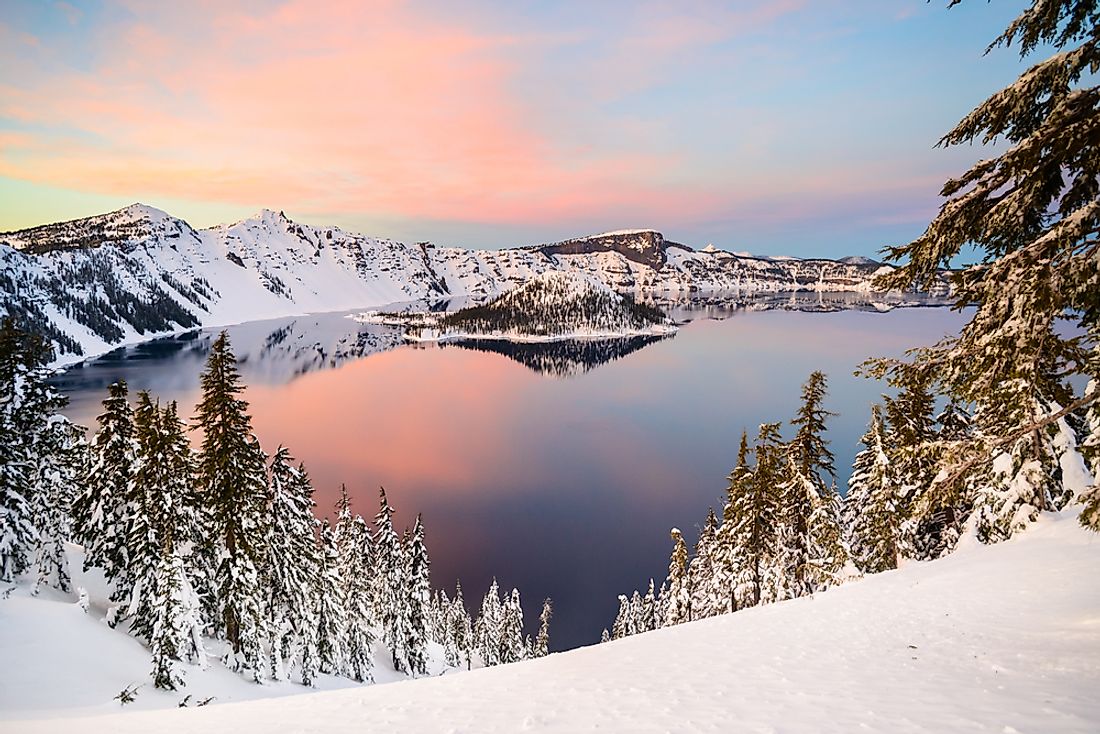What Are The Differences Between A Volcanic Caldera And A Volcanic Crater?

Volcanic processes, though destructive in nature, have led to the formation of interesting geographical features on Earth. Most of these features have benefited the flora and fauna in the long run, and have generated revenues for different countries by attracting tourists. Volcanic calderas and craters are two such features of a volcano. Noting the difference between a volcanic caldera and a volcanic crater may not be an easy task. Differentiating these two features is even harder from photographs, and some people will always give a generic term that a caldera forms a ‘larger’ depression than a crater. Larger, as used here, is a relative term and thus the best comparison of the two features may come from the formation process, rather than size.
The Formation Processes Of A Volcanic Caldera
A caldera forms during volcanic activity when a large magma eruption or lava flow leaves behind a huge vacuum underground. Volcanic materials (volcanic rocks and tuff) above this chamber collapses inside leaving a huge depression at the top. Calderas can be circular or take any shape because of the magnitude and violent nature of the volcanic activity forming them. Calderas, in some cases, begin as craters but deepen and expand with heightened volcanic activity that widens the chambers. Some calderas are formed as a result of big and sudden volcanic explosions, a phenomenon that explains their irregular shapes. In both cases, the unsupported ceiling above the empty chamber collapses to fill the gap left behind. Calderas form at the end of the eruption as the empty magma chamber underneath fills. Almost vertical walls are a key feature of a caldera. Many calderas in the world are filled with water creating small to medium-sized lakes, like Crater Lake in Oregon, US.
The Formation Process Of A Volcanic Crater
After volcanic activity, lava at the top of a volcano weakens the rock structure through high pressure and sinks them to form a crater described as a depression at the top with openings for active volcanic activities like lava flow and eruption of volcanic ashes. The active openings for volcanic activities make the difference between a volcanic crater and a caldera, as some craters occasionally show signs of underneath activities through smoke or steam. Volcanic craters are smaller in size and fairly circular. Volcanologists describe the walls of craters as being made of pyroclastic material and lava deposits. Craters may also form inside calderas.
Examples Of Volcanic Calderas And Volcanic Craters
Calderas are constant reminders of giant eruptions in the past. Yellowstone National Park is a big caldera, and so is New Mexico’s Valles Grande. Sturgeon Lake caldera in Canada hosts large mineral deposits. In Africa, Ngorongoro and Mount Meru in Tanzania, and Menengai, Mount Elgon, and Mount Longonot in Kenya are examples of calderas, among many others. In Asia, examples are Aira in Japan, Heaven Lake in North Korea, Taal Volcano in the Philipines, Nemrut in Turkey, and Uzon in Russia, just to mention a few. The US has Crater Lake in Oregon and fifteen others. There are hundreds of volcanic calderas and thousands of volcanic craters in the World.
Overview Of The Differences
Calderas represent many dormant volcanoes, though some have shown signs of future activity. On the other hand, most volcanic craters remain active or were active in the recent past. Differentiating between volcanic craters and craters formed from other activities like meteorites is important.











